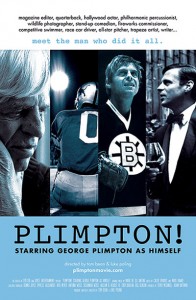For many years,Gigolos season 4 episode 7 sex scenes Adobe Flash was synonymous with animation on the web, browser games, and interactive websites. In 2011, the Flash Player plug-in was installed on 99% of desktop browsers in the Western world. One decade later, no modern web browser supports Flash outside of China.
In the 1990s, the internet was growing rapidly, and web browsers could not keep up with the pace of new file types that were designed to be shared over it. That led to the development of plug-ins: small apps that weren't designed to work independently, but add functions to the browser, like browser extensions do today.
Video plug-ins such as Apple QuickTime and the Windows Media Player showed video content that was made of individual frames, somewhat similar to how animated GIFs work, but with the added capability of showing some of those frames while the rest were downloading, and adding compression to improve loading speed at the expense of quality.
In the era of dial-up modems, internet video was either of low resolution, despairingly slow to load, or both. In that kind of context, interactive videos that loaded quickly and fully utilized the resolution of every screen looked like a miracle. This is the story of how a big part of the early web culture was formed.
(Editor: {typename type="name"/})
 The Deal of the Art
The Deal of the Art
 Peaks and Valleys: Leslie Stephen, Mountaineer by Alex Siskin
Peaks and Valleys: Leslie Stephen, Mountaineer by Alex Siskin
 On This Day by Sadie Stein
On This Day by Sadie Stein
 “repeat, repeat, repeat; revise, revise, revise”: Poets Mourning Poets by Casey N. Cep
“repeat, repeat, repeat; revise, revise, revise”: Poets Mourning Poets by Casey N. Cep
 The Worming of Acorn
The Worming of Acorn
 Tom Carson ,April 11, 2018 Conflict Irreso
...[Details]
Tom Carson ,April 11, 2018 Conflict Irreso
...[Details]
Louise Erdrich Wins NBA for Fiction by Sadie Stein
 Louise Erdrich Wins NBA for FictionBy Sadie SteinNovember 15, 2012BulletinWe’d like to congratulate
...[Details]
Louise Erdrich Wins NBA for FictionBy Sadie SteinNovember 15, 2012BulletinWe’d like to congratulate
...[Details]
Inside Amazon, and Other News by Sadie Stein
 Inside Amazon, and Other NewsBy Sadie SteinDecember 3, 2012On the ShelfThese photos of Amazon’s ware
...[Details]
Inside Amazon, and Other NewsBy Sadie SteinDecember 3, 2012On the ShelfThese photos of Amazon’s ware
...[Details]
William Styron in Letters, Part 2 by William Styron
 William Styron in Letters, Part 2By William StyronDecember 4, 2012CorrespondenceRose Burgunder and W
...[Details]
William Styron in Letters, Part 2By William StyronDecember 4, 2012CorrespondenceRose Burgunder and W
...[Details]
We’re Living in “The Thick of It”
 Ned Resnikoff ,July 24, 2017 We’re L
...[Details]
Ned Resnikoff ,July 24, 2017 We’re L
...[Details]
Sunday! Plimpton! Screens at DOC NYC: Mention TPR for $5 Tickets! by Sadie Stein
 Sunday! Plimpton!Screens at DOC NYC: Mention TPR for $5 Tickets!By Sadie SteinNovember 8, 2012Bullet
...[Details]
Sunday! Plimpton!Screens at DOC NYC: Mention TPR for $5 Tickets!By Sadie SteinNovember 8, 2012Bullet
...[Details]
Voices Carry: An Interview with Elena Passarello by Michele Filgate
 Voices Carry: An Interview with Elena PassarelloBy Michele FilgateNovember 28, 2012At WorkElena Pass
...[Details]
Voices Carry: An Interview with Elena PassarelloBy Michele FilgateNovember 28, 2012At WorkElena Pass
...[Details]
Louise Erdrich Wins NBA for Fiction by Sadie Stein
 Louise Erdrich Wins NBA for FictionBy Sadie SteinNovember 15, 2012BulletinWe’d like to congratulate
...[Details]
Louise Erdrich Wins NBA for FictionBy Sadie SteinNovember 15, 2012BulletinWe’d like to congratulate
...[Details]
 Max B. Sawicky ,December 13, 2017 Alabama,
...[Details]
Max B. Sawicky ,December 13, 2017 Alabama,
...[Details]
T. S. Eliot’s Widow Dies at Eighty
 T. S. Eliot’s Widow Dies at Eighty-SixBy Sadie SteinNovember 12, 2012In MemoriamMy father is
...[Details]
T. S. Eliot’s Widow Dies at Eighty-SixBy Sadie SteinNovember 12, 2012In MemoriamMy father is
...[Details]
接受PR>=1、BR>=1,流量相当,内容相关类链接。